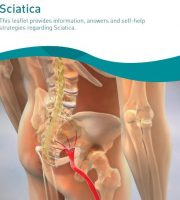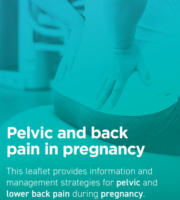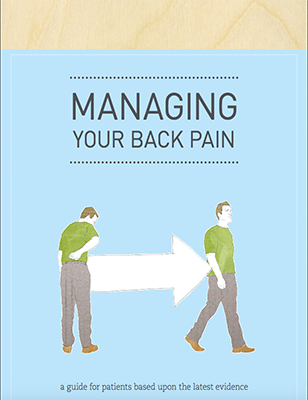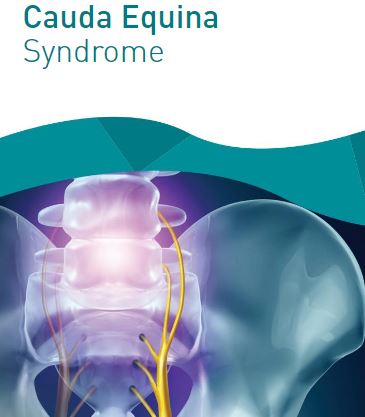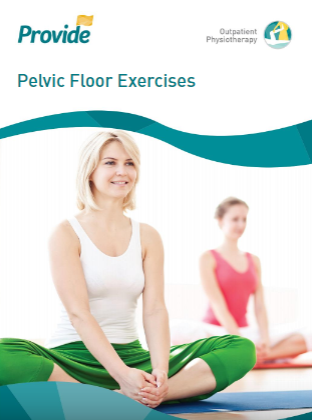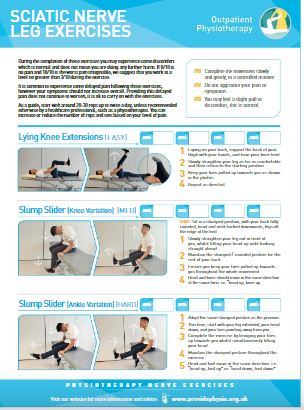Overview
Back pain is a very common problem, which affects 4 out of 5 of us at some point – A very unpleasant but normal part of life. Fortunately, most back pain is not due to anything serious and rarely needs a scan although multiple factors can contribute to it, including physical, mental and lifestyle aspects. The people who recover quickest due to back pain are those who stay active and get on with life despite some pain.
With the right guidance and support, most people with back pain will recover without the need for medical help. Understanding back pain and what you can do to help yourself get better is an essential part of your recovery.
Watch this short video by the Chartered Society of Physiotherapy on how to manage back pain and then look at the other sections for more information.
Type of Back Pain
Click on this short video below, produced by Pain-Ed, to listen to people with back pain presenting 10 facts every person should know about back pain:
Sciatica
See exercises in Self Help section or Click Here for specific sciatic nerve gliding exercises to help reduce your leg pain in addition to the back exercises provided in the Sciatica leaflet.
However, there are some rare cases where it might be related to a specific structure in the back. Click on Further Support for additional information and when to see a healthcare professional. Some people with sciatica may require prescribed medication to help with nerve pain.
Pelvic girdle pain (PGP) during pregnancy is very common and affects one in five women. In most cases, the pain will resolve after several weeks or months following the birth.
During pregnancy, the stability of the pelvis is affected allowing the joints to move more than normal. This is caused by changes in the muscles and ligaments. As the pregnancy progresses your posture and your pelvis will come under increasing pressure.
Pain can be felt in the pubic, groin, inner thigh and back region. It can be on one side or both sides.
If you experience symptoms that do not improve within a week or two, or interfere with your daily function, you may have PGP and should ask for help from your midwife, GP, physiotherapist or other healthcare professional.
Back pain is also common during pregnancy, especially if you have a history of back pain. Sometimes pain may spread into your thighs and the front of your abdomen.
Most cases of back pain during pregnancy are due to an altered posture, muscle weakness and an increase in joint laxity which normally resolves after pregnancy in 80-95% of cases.
Back pain may start at any time during your pregnancy but is most common in the second half of the pregnancy. Being mindful of your posture, lifting technique, heavy domestic tasks and exercise are a good place to start.
Exercises to strengthen muscles in the back, hips, stomach and pelvic floor region are key to effectively managing back pain during pregnancy. Click Here for exercises that our physiotherapists would recommend.
This leaflet provides information, answers and self-help strategies regarding pelvic and back pain during pregnancy.
Pelvic And Back Pain In Pregnancy
Another problem during and after pregnancy can be stress incontinence due to weakness of the pelvic floor muscles. Click Here for further information on how to carry out your pelvic floor exercises correctly and making lifestyle changes if necessary.
For pregnancy and postpartum related advice, exercises and management of pelvic pain, continence issues, pelvic floor exercises, perineal massage and more, please watch the videos – Click Here
For pregnancy and postpartum yoga exercises to try, please Click Here and see if you are able to complete some of these NHS-approved exercises.
Back Pain Beliefs Calculator
You can also complete this short questionnaire created by NHS 24, which can help measure your beliefs about back pain and if these beliefs are affecting your recovery. Keep a note of your current score and try the questionnaire again after you have looked at the information on the website.
| There is no treatment for back pain | |
| Back pain will eventually stop you from working | |
| Back pain means periods of pain for the rest of one’s life | |
| Back pain makes everything in life worse | |
| Back pain may mean you end up in a wheelchair | |
| Back pain means long periods of time off work | |
| Once you have had back pain there is always a weakness | |
| Back pain must be rested | |
| Later in life back pain gets progressively worse |
Low Score
The lower the score then the more likely it is that your beliefs about your back pain are limiting your recovery.
Worrying that you will never return to normal will not help your recovery. It may in fact slow things down.
Most back pain does improve with time and is rarely due to any serious illness or disease.
There is plenty you can try to help yourself get back to normal.
A good place to start this recovery is by looking at the information in the Self Help and FAQs sections for back pain and Self Help and FAQs sections for persistent pain. Don’t take back pain lying down.
High Score
The higher your score then the more likely it is your positive beliefs about your back pain are helping your recovery.
This is great news! Having positive beliefs about recovery and getting back to normal helps you maximise your recovery.
Keeping active and not letting back pain take over your life does help you get back to normal quicker.
It would still be worthwhile to take some time to look at the advice on this website and see if you can help yourself even more.
High Score
Please Select Some Values
Self help
Evidence has shown that people who understand their Musculoskeletal health problem and take an active involvement to help themselves have a much better outcome.
Here are some really helpful leaflets, videos, exercises and useful links to other websites that have been approved by our physiotherapists so that you can start getting better today.
This information is not intended or implied to be a substitute for professional medical advice, diagnosis or treatment if required. All content is for general information purposes only.
Click Here to access our getUBetter app, which is an easy, safe and effective way to support your recovery.
Leaflets
Videos
Exercises
Useful Links
- All you need to know about back pain, informed by physiotherapists
- 10 things you need to know about your back to give you insights into previously held beliefs about back pain based on the current evidence. Check your own back pain beliefs using this Calculator before and after you read these back pain facts.
- Information put together by patients, clinicians and UK researchers, containing the most up to date advice for back pain
- Simple back exercises and stretches you can do at home to help ease your back pain and improve your strength and flexibility.
- Further information on back pain including causes, treatment, prevention and when to get immediate medical advice.
- Information on sciatica including causes, treatment and when to get medical help as well as the ‘do’s and don’ts’ on how you can ease the pain from sciatica yourself and how to stop it coming back.
- Free-to-use NHS online programme and app to enable self-management and coping with persistent back pain using exercise
Further Support
If your back pain is still not improving despite following the advice and guidance provided on the website and you score a ‘Medium’ or ‘High Risk’ when completing the ‘Is My Back Pain Likely To Persist?’, you may require further help and support from the Provide Physiotherapy Service. Please click on the ‘Physiotherapy Self-Referral’ box to refer yourself to the service for further management of your back problem.
Remember that most causes of back pain are not due to anything serious, although there are rare cases where you would need to seek urgent medical help. Contact your GP or NHS 111 for immediate advice if you have any of the following symptoms that have started around the same time as your back pain:
- Numbness or tingling around your genitals or inner thighs
- Difficulty passing urine
- Loss of bladder or bowel control
- Unexplained weight loss
- Fever or chills
- Significant trauma e.g. car accident, fall
- Previous history of cancer
If you do have any of the first three symptoms in the list above that accompany your back pain, see cauda equina syndrome leaflet and video for more information.
FAQs
No - Scientific studies now indicate prolonged rest and avoidance of activity for people with low back pain actually leads to higher levels of pain, greater disability, poorer recovery and longer absence from work.
In the first few days of a new episode of low back pain, avoiding aggravating activities may help to relieve pain. However, staying as active as possible and returning to all usual activities gradually is actually important in aiding recovery – this includes staying in work where possible.
While it is normal to move differently and more slowly in the first few days of having back pain, this altered movement can be unhealthy if continued in the long-term.
You rarely need a scan and it can do more harm than good. This is because seeing perfectly normal changes to their spine related to age, which are not predictive of back pain, can cause people to avoid the activities they should be doing to get better, such as exercise and movement in general.
Studies have shown that a scan does not show the exact reason for back pain in 95% of cases and will not guide further management. Watch Video
However, there are extremely rare cases of back pain where immediate medical advice and need for scanning may be required. Know More
No – You should not fear bending and lifting. These movements are often portrayed as causes of back pain and while an injury can occur if something is picked up in an awkward or unaccustomed way, it’s most likely to just be a sprain or strain.
The important thing is to practice and get your body used to carrying different loads and weights in a way you find comfortable and efficient. People who completely avoid bending and lifting due to back pain are more likely to develop longer term problems with their back.
The more you gradually expose your back to these normal movements and activities that the spine is designed to carry out, the more comfortable and easier they become.
Yes, absolutely! Exercise and activity reduces and prevents back pain. Exercise is shown to be very helpful for tackling back pain and is also the most effective strategy to prevent future episodes.
Start slowly and build up both the amount and intensity of what you do and don’t worry if it’s sore to begin with – you won’t be damaging your back.
No one type of exercise is proven to be more effective than others so just pick an exercise you enjoy, that you can afford to maintain in the long-term and that fits in with your daily schedule.
Painkillers may be necessary for a short period if back pain is severe although this will not speed up your recovery.
They should only be used in conjunction with other measures, such as exercise, and even then just as a short-term option as they can bring side effects.
Exercise, which is safer and cheaper, is considered the preferred option. Movement is the best medicine for back pain!
Surgery is rarely needed.
There are some uncommon back conditions where there is pressure on the nerves that supply the legs and the patient gets leg symptoms, such as pain, pins and needles or numbness. For these conditions, surgery can help the leg symptoms but it is important to understand that it is not always required.
You also need to know that on average, the results for back surgery are no better in the medium and long term than non-surgical interventions, such as exercise.
So a non-surgical option, which includes exercise and activity, should always come first.

